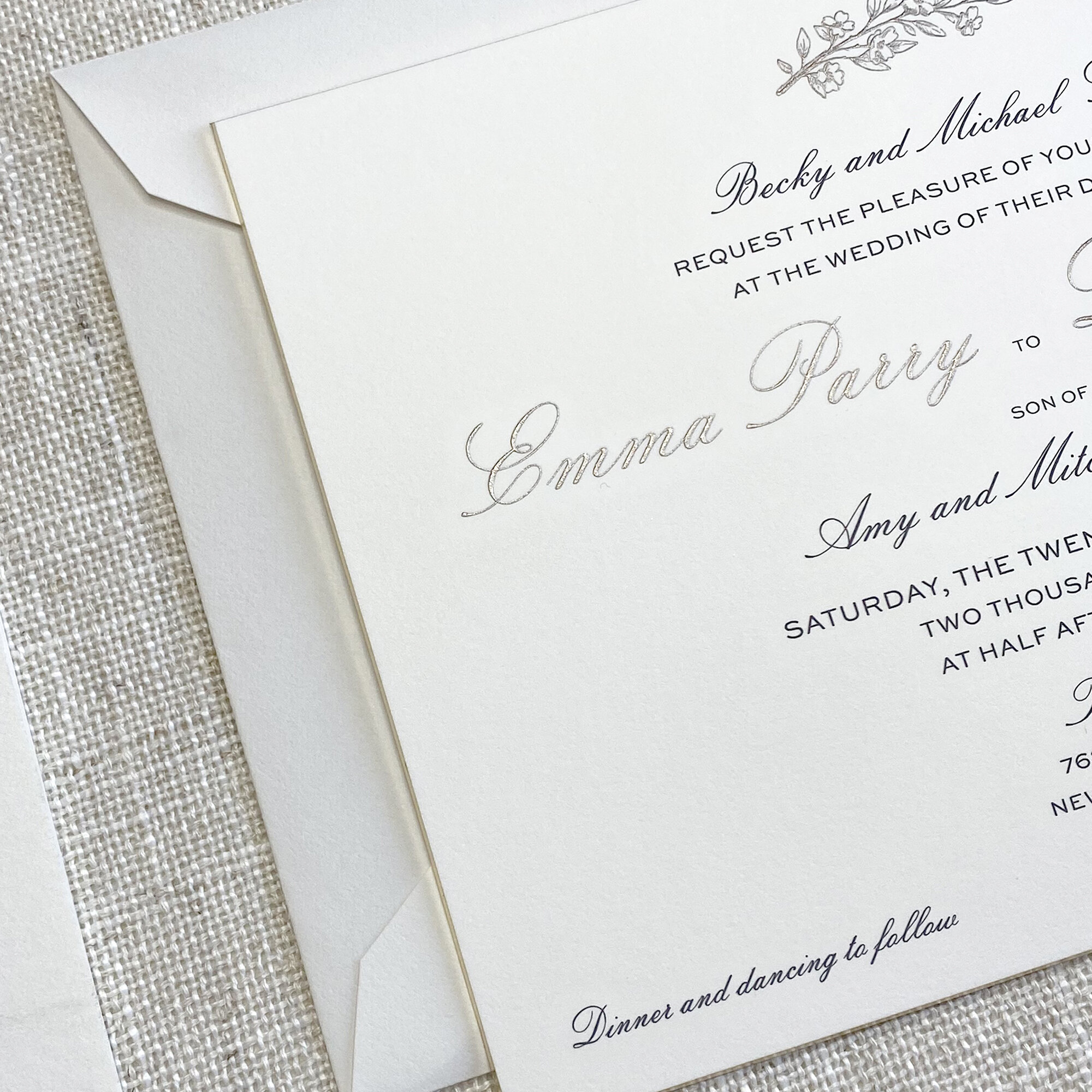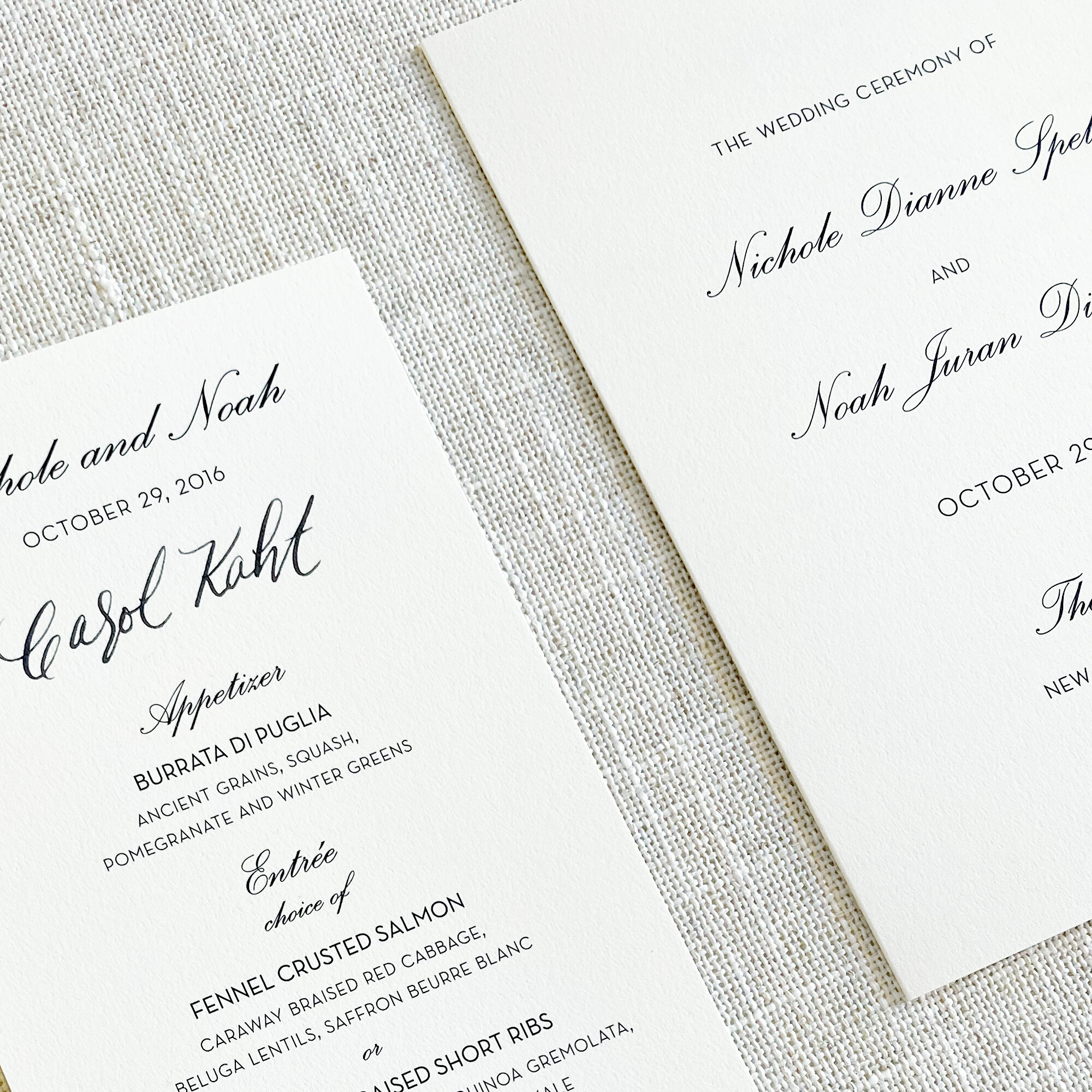Print Methods
Letterpress
Started in the 15th century, letterpress is the oldest form of printing and is known for its tactile quality and timeless aesthetic. Raised plates or print dies are created for each color being printed, which are then inked and pressed, impressions that are best carried by thick, soft paper. Letterpress was originally performed with hand-set type made from wood or metal, but modern plate-making processes have resulted in endless possibilities for printing intricate designs and artwork.
Foil Stamping
Printing with foil offers the best option for achieving a truly shiny metallic appearance, although there are a wide variety of options beyond high shine foils in the form of matte, pearlized, and even textured foils. Color consistency throughout a print run, with bright, saturated colors in particular, as well as the ability to achieve extremely fine detail when applied to hard or coated paper stock are hallmarks of foil stamping. For dynamic effect, foil can also be combined with other print processes such as letterpress, engraving and embossing
Engraving
Characterized by crisp, raised lines of text and fine-detailed results, engraving is a traditional method of stationery printing. Print dies are made for each color, which are filled with ink and pressed against the paper leaving a trademark “bruise” on the back of the card. Some additional strengths of engraving include the option of using metallic inks, printing with light-colored inks on dark paper, and the ability to print on extra thick, luxurious cotton paper.
Thermography
Thermographic printing is the application of heat to a combination of ink and powder resin, producing a raised lettering effect that is a less expensive alternative to engraving. While thermography has a slightly shiny finish and will not achieve engraving’s degree of clarity, it reproduces detailed line art and text extremely well and is a great option for creating invitations and stationery with a distinctive feel.
Digital Printing
The best choice for affordable short runs, digital printing is a versatile method for printing designs with multiple colors, photos, and layered artwork on a variety of paper types. A great choice for menus, programs, and other day-of print items, another advantage of digital printing technology is the ability to add your addresses directly to envelopes or postcards with variable data printing.
Offset Lithography
Offset lithography is the most common form of commercial printing used for magazine publications and large quantity print runs. Because this method relies on plates to be made for each color, pieces with multiple colors can be costly to produce. Spot colors can be used for greater color accuracy and consistency over larger areas of ink.
Embossing
Embossed designs are created by pressing paper between two metal dies, pushing upwards to raise the surface of the paper. Debossing creates the opposite effect, similar to letterpress but best suited for artwork or larger display-sized text. Foil can be paired with embossing for even more dynamic emphasis, and highly detailed artwork can be used to create sculptural effects.
Edge Painting
Edge painting is a great way to add dimension or an extra pop of color to any invitation suite or set of personal stationery. Colors can be mixed to match any print color, but we often recommend skewing a shade or two darker if the overall color scheme is very subtle and light, so that the edge always attracts attention.
Edge Gilding
The practice of applying gold leaf to artwork and decorative artifacts dates back millennia, and was first applied to paper not long after the advent of printing. Fast forward hundreds of years and various colors and finishes of foil can be used in lieu of gold to create this most eye-catching of finishes on cards and invitations.









